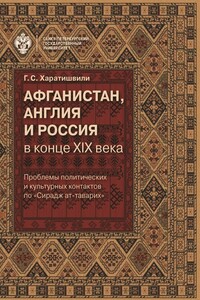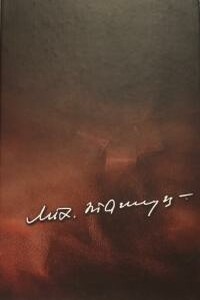The Run of His Life: The People v. O. J. Simpson - [19]
In 1967, at the University of Southern California, O.J. Simpson became pope-and then some. He quickly established himself as the best running back in the school’s history on what was perhaps the best team in USC history. He gained 158 yards rushing in his third game and 190 in his fourth. Southern Cal had not beaten Notre Dame in South Bend since 1939, but in 1967 Simpson and his teammates routed the Irish there, 24-7. In the final week of O.J.’s first season, USC played crosstown rival UCLA in a game freighted with even more significance than usual. Both schools, with just one loss each, remained in the hunt for a national championship, and likewise both teams needed only to beat the other to win a bid to go to the Rose Bowl. Finally, the game matched the leading contenders for the Heisman trophy, awarded annually to the best player in the nation-Gary Beban, the senior UCLA quarterback, and O.J. Simpson, the USC junior. Late in the fourth quarter, the game came down to a single play. UCLA led 20-14, and the Trojans had the ball on their own thirty-six-yard line. The drive looked like it would be Southern Cal’s last chance to score. It was third down and eight yards to go.
In the huddle, Toby Page, the USC quarterback, called a play that did not involve Simpson, but he changed his mind at the line of scrimmage and called out, “Twenty-three blast!”-signaling to his teammates that he was calling an audible. In the reconfigured play, Page handed the ball to Simpson, who took off-first right and then back against the grain to the left, all the while trailing UCLA defenders. Simpson outran his own blockers as well as the defense, and his touchdown gave the Trojans the game. Decades later the play remains known to USC faithful as, simply, “the run.” USC went on to beat Indiana in the Rose Bowl, where Simpson was named player of the game, and to win the national championship. (Beban, however, still won the Heisman in a close vote.)
As a senior, Simpson picked up where he had left off. He gained 236 yards in the season opener against Minnesota, 220 against Stanford, and a career high of 238 yards against Oregon State. Southern Cal was tied by Notre Dame in its last regular season game and lost the Rose Bowl to Ohio State, but as a senior Simpson won the Heisman in a landslide. The number of O.J.’s jersey-32-was retired at the end of his career. To be sure, his success at USC was limited to the athletic arena. In those days, before the NCAA began to regulate seriously the recruiting and schooling of college athletes, Simpson received virtually no education at USC. Even today, he can barely write a grammatical sentence. As he confided to Playboy, “My only interest in school was in gettin’ out, so I took courses like home economics, and didn’t exactly kill myself.”
Simpson was the first player selected in the 1969 professional draft and, in a characteristic gesture, parlayed that first year into a book deal as well as a lucrative contract with the Buffalo Bills. OJ: The Education of a Rich Rookie, which was cowritten by Pete Axthelm, is for the most part a stupefyingly dull game-by-game account of the season (“We spent the week working on the I-formation…”), but there are casually revealing moments as well. On the very first page, Simpson wrote, “I have been praised, kidded, and criticized about being image-conscious. And I plead guilty to the charge. I have always wanted to be liked and respected.” In fact, his good looks and cheerful demeanor with reporters and fans paid dividends as soon as he left college.
Before he had played a single professional game, Simpson won endorsement contracts with Chevrolet and Royal Crown Cola, and a broadcasting deal with ABC. “I’m enjoying the money, the big house, the cars; what ghetto kid wouldn’t?” Simpson went on in that first book. “But I don’t feel that I’m being selfish about it. In the long run, I feel that my advances in the business world will shatter a lot of white myths about black athletes-and give some pride and hope to a lot of young blacks. And when I’m finished with the challenges of football, I’m going to take on the challenge of helping black kids in every way I can. I believe I can do as much for my people in my own way as a Tommie Smith, a Jim Brown, or a Jackie Robinson may choose to do in another way. That’s part of the image I want, too.” Simpson had put his views on race more starkly in a 1968 interview with Robert Lipsyte of The New York Times. As the country smoldered with racial tensions-and some black athletes, like Robinson and Muhammad Ali, jeopardized their careers to participate in the civil rights movement-Simpson told Lipsyte, “I’m not black, I’m O.J.”
Simpson’s professional football career started slowly. His first Bills coach, John Rauch, favored a pass-oriented attack, and O.J. did not come close to winning the Rookie of the Year award. He missed most of his second year with an injury. In his third year, the Bills won only one game. But after that season, the owner of the team, Ralph Wilson, made a decision to reorient the entire Bills operation around O.J. Simpson. He fired Rauch and brought in Lou Saban, who favored a running attack. The team began using its draft choices on blockers, building the group that would become famous as the Electric Company-because they “turn on the Juice.” In 1972, the first season under Saban, Simpson ran for 1,251 yards, the best in the league, and his professional career was launched.

Книга представляет собой исследование англо-афганских и русско-афганских отношений в конце XIX в. по афганскому источнику «Сирадж ат-таварих» – труду официального историографа Файз Мухаммада Катиба, написанному по распоряжению Хабибуллахана, эмира Афганистана в 1901–1919 гг. К исследованию привлекаются другие многочисленные исторические источники на русском, английском, французском и персидском языках. Книга адресована исследователям, научным и практическим работникам, занимающимся проблемами политических и культурных связей Афганистана с Англией и Россией в Новое время.

"Великий человек, яркая личность, Божий дар Беларуси" - так Михаила Николаевича Пташука называли еще при жизни наши современники и с любовью отмечали его уникальный вклад в развитие отечественного, российского и мирового кинематографа. Вклад, требующий пристального внимания и изучения. "И плач, и слёзы..." - автобиографическая повесть художника.

Тюрьма в Гуантанамо — самое охраняемое место на Земле. Это лагерь для лиц, обвиняемых властями США в различных тяжких преступлениях, в частности в терроризме, ведении войны на стороне противника. Тюрьма в Гуантанамо отличается от обычной тюрьмы особыми условиями содержания. Все заключенные находятся в одиночных камерах, а самих заключенных — не более 50 человек. Тюрьму охраняют 2000 военных. В прошлом тюрьма в Гуантанамо была настоящей лабораторией пыток; в ней применялись пытки музыкой, холодом, водой и лишением сна.

В книге рассказывается история главного героя, который сталкивается с различными проблемами и препятствиями на протяжении всего своего путешествия. По пути он встречает множество второстепенных персонажей, которые играют важные роли в истории. Благодаря опыту главного героя книга исследует такие темы, как любовь, потеря, надежда и стойкость. По мере того, как главный герой преодолевает свои трудности, он усваивает ценные уроки жизни и растет как личность.

Брошюра написана известными кинорежиссерами, лауреатами Национальной премии ГДР супругами Торндайк и берлинским публицистом Карлом Раддацом на основе подлинных архивных материалов, по которым был поставлен прошедший с большим успехом во всем мире документальный фильм «Операция «Тевтонский меч».В брошюре, выпущенной издательством Министерства национальной обороны Германской Демократической Республики в 1959 году, разоблачается грязная карьера агента гитлеровской военной разведки, провокатора Ганса Шпейделя, впоследствии генерал-лейтенанта немецко-фашистской армии, ныне являющегося одним из руководителей западногерманского бундесвера и командующим сухопутными силами НАТО в центральной зоне Европы.Книга рассчитана на широкий круг читателей.

Книга Стюарта Джеффриса (р. 1962) представляет собой попытку написать панорамную историю Франкфуртской школы.Институт социальных исследований во Франкфурте, основанный между двумя мировыми войнами, во многом определил не только содержание современных социальных и гуманитарных наук, но и облик нынешних западных университетов, социальных движений и политических дискурсов. Такие понятия как «отчуждение», «одномерное общество» и «критическая теория» наряду с фамилиями Беньямина, Адорно и Маркузе уже давно являются достоянием не только истории идей, но и популярной культуры.